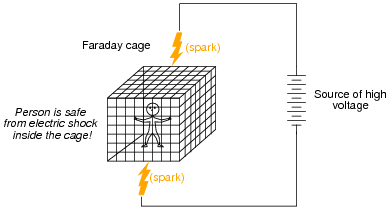Weather Hazards
Safety is the primary concern of aviators, and even before takeoff, every attempt to avoid flying in and around hazardous weather situations. In some rare occasions, pilots encounter weather conditions while in flight and have to make adjustments to navigate safely through hazards.
Clouds with extensive vertical development are cumulus clouds. Cumulus clouds often develop into cumulonimbus clouds (thunderstorms) which contain a large amount of moisture and unstable air. These clouds are the most dangerous to pilots because they can produce lightning, hail, tornadoes, gusty winds and wind shear. They can be as high as 60,000 ft, which means that pilots can not fly over them, and given the hazards that thunderstorms produce, they are unable to fly under or through them.

Source: Fir0002 via Wikimedia
Each year, airplanes are struck by lightning. The last U.S. Airliner that crashed due to lightning was in 1963, and since then research has been done to keep airplanes safe from lightning along with rules for lightning protection have been instituted.
The exterior structure of a plane is metal, which causes the aircraft to act as a Faraday cage. In a Faraday cage, an electrical charge is put to the metal, which will distribute the electrical charge around the outside without affecting the inside.
This protects the passengers and crew from feeling the electrical shock and many times passengers are never aware that lightning struck their plane. The real danger is to the ground crews that work on the tarmacs of airports and why flights are delayed in the event of severe weather.
Hail is precipitation that forms when strong updrafts within a thunderstorm carry rain droplets into cold portions of the atmosphere. Supercooled water droplets collide with one another, creating layers and eventually forming a hailstone.
Updrafts in a thunderstorm can be strong enough that it keeps the rain from falling to the ground. By the time hail hits the ground, it has already melted so what is observed and measured is smaller than the hailstones that are clustered within a thunderstorm. These clusters, called hail cores, can have hailstone the size of softballs (4” diameter) or larger.

Source: Beau Sorensen, bsutah.com

